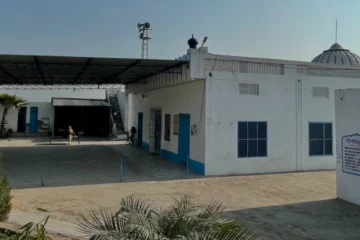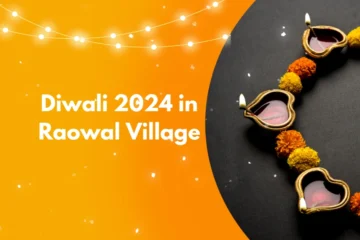
Dussehra 2024 is one of India’s most celebrated festivals. It marks the victory of good over evil, light over darkness. Dussehra in 2024 was celebrated on October 12. This guide will help you understand the importance of Dussehra, its traditions, and how to celebrate it in the best way possible.
What is Dussehra?
Dussehra is a Hindu festival that falls at the end of the Navratri period and lasts for nine nights. It symbolizes the triumph of Lord Rama over the demon king Ravana. The festival is known as Vijayadashami, where “Vijaya” means victory and “Dashami” means the tenth day. This victory represents the defeat of Ravana, who had kidnapped Lord Rama’s wife, Sita.
The festival is also associated with the Goddess Durga. It commemorates her victory over the buffalo demon Mahishasura. Dussehra, therefore, carries a dual significance: celebrating the victories of both Lord Rama and Goddess Durga.
Historical and Mythological Importance
Dussehra’s story is rooted in the ancient Hindu epic, the Ramayana. In this story, Ravana, the king of Lanka, kidnaps Sita. Lord Rama, accompanied by his brother Lakshmana and the devoted monkey god Hanuman, launches a battle to rescue her. After a fierce battle that lasts ten days, Lord Rama defeats Ravana on the day of Dussehra. This victory is a symbol of the triumph of dharma (righteousness) over adharma (evil).
Similarly, the story of Goddess Durga and Mahishasura also reminds people of the power of good over evil. Mahishasura, who terrorized the heavens, was defeated by the goddess after a long battle. Both these tales remind us of the eternal truth: no matter how powerful evil may seem, it is always destined to fall before righteousness.
How Dussehra is Celebrated
Dussehra is celebrated with joy and fervor all across India, though the customs and traditions may vary from region to region.
1. Effigy Burning
One of the most iconic rituals is the burning of Ravana’s effigy. Huge, often elaborately made, effigies of Ravana, his brother Kumbhakarna, and his son Meghnad are set ablaze. This symbolizes the destruction of evil. In cities like Delhi, large crowds gather to witness the burning of these effigies amidst the sound of fireworks.
2. Ram Leela Performances
In many parts of India, especially in northern states, Ram Leela is performed. These are theatrical plays that narrate the entire story of Lord Rama’s life and his victory over Ravana. These plays are staged over the course of nine days leading to Dussehra and culminate in the final battle on the day of the festival.
3. Worship of Weapons and Tools
In some parts of India, especially in the state of Karnataka, people worship their tools, weapons, and vehicles on Dussehra. This practice is called Ayudha Puja. The idea behind this is to honor the instruments that help them in their daily lives, much like how Lord Rama and Goddess Durga used weapons in their battles.
4. Celebrations in West Bengal
In West Bengal, Dussehra coincides with the final day of the Durga Puja festival. After days of worship, the idol of Goddess Durga is taken for immersion in rivers or seas. This is known as Visarjan. It is a grand and emotional moment, as devotees bid farewell to the goddess until next year.
5. Processions and Parades
In cities like Mysore and Varanasi, grand processions are held. Decorated elephants, horses, and performers are part of these colorful parades, accompanied by music, dancing, and chanting of prayers. In Mysore, the Mysore Palace is illuminated with thousands of lights, and people gather to witness the celebrations.
Preparing for Dussehra 2024
To celebrate Dussehra in 2024, it’s important to start preparing in advance. Here are some tips to make your Dussehra special:
1. Cleaning and Decorating the Home
Before the festival, people clean their homes to welcome positive energy. This cleaning represents the removal of negativity and evil. Decorate your home with flowers, lights, and rangoli (colorful floor designs). Many people also place a picture or idol of Lord Rama or Goddess Durga in their home temples.
2. Buying New Clothes
It is common to wear new clothes on Dussehra. People often buy traditional attire, like saris for women and kurta-pajamas for men, to celebrate the occasion in style. In many families, children are also dressed up as characters from the Ramayana, adding to the festive spirit.
3. Participating in Ram Leela
If you enjoy theater or drama, consider taking part in a local Ram Leela performance. Even if you don’t act, attending a performance can be a great way to immerse yourself in the cultural side of Dussehra.
4. Worship and Prayers
On Dussehra, it is customary to perform a puja (prayer) at home. You can either invite a priest to your home or perform a simple puja by yourself. Light a lamp, offer flowers, and pray for the well-being of your family. Reading stories from the Ramayana or Durga Saptashati can also be a meaningful way to connect with the festival’s religious roots.
5. Festive Foods
Food is an integral part of Dussehra celebrations. In different parts of India, people prepare sweets like jalebi, peda, and laddu. In West Bengal, people enjoy bhog, which is a meal offered to the goddess before being shared with devotees. Prepare traditional dishes or try something new to add flavor to your celebration.
Regional Differences in Dussehra Celebrations
Dussehra may be celebrated differently depending on where you are in India. Here’s a look at how it varies across the country:
1. North India
In states like Uttar Pradesh, Delhi, and Haryana, the burning of Ravana’s effigy is the main highlight. Ram Leela performances are also popular, and fairs are often set up around these events. The atmosphere is vibrant, with lights, fireworks, and music.
2. South India
In South India, Dussehra is more about worship and reflection. In Karnataka, the Mysore Dussehra is famous for its grand parades and illuminated palace. In Tamil Nadu, the festival is celebrated as part of Navratri, where dolls (called Golu) are arranged in homes, and people visit each other’s homes to see the displays.
3. West Bengal
Dussehra is known as Bijoya Dashami and is marked by the immersion of Goddess Durga’s idol in rivers or lakes. The mood is both festive and emotional, as people say goodbye to the goddess.
4. Maharashtra
In Maharashtra, people exchange apta leaves, symbolizing gold, as a gesture of goodwill. Many people worship their vehicles and tools as part of the Ayudha Puja. The burning of Ravana’s effigy also takes place in many cities.
5. Gujarat
In Gujarat, Dussehra marks the end of the famous Navratri Garba celebrations. People dance to traditional music for nine nights, and the tenth day is a time to relax and celebrate Dussehra with prayers and feasts.
Why Dussehra is Still Relevant Today
The lessons of Dussehra are timeless. Even in today’s fast-paced world, the festival reminds us of the importance of fighting for truth and righteousness. It encourages us to overcome our inner demons, such as anger, greed, and ego. The burning of Ravana’s effigy is not just a physical act; it represents the destruction of negative thoughts and habits within us.
Moreover, Dussehra fosters a sense of unity. Families come together to celebrate, communities engage in cultural performances, and people from all walks of life participate in the festivities.
FAQs About Dussehra
1. What is the meaning of Dussehra?
Dussehra means the victory of good over evil. It marks Lord Rama’s defeat of Ravana and the end of the Navratri festival.
2. Why do we burn Ravana’s effigy?
The burning of Ravana’s effigy symbolizes the destruction of evil forces and negative qualities.
3. How is Dussehra celebrated in different regions?
Dussehra is celebrated in many ways across India. In the north, effigies of Ravana are burned. In the south, tools and weapons are worshiped. In West Bengal, the festival is part of Durga Puja.
4. What foods are typically eaten during Dussehra?
People enjoy a variety of sweets like jalebi, peda, and laddu during Dussehra. Special meals are prepared, such as bhog in West Bengal.
5. How long does the Dussehra festival last?
Dussehra is celebrated on the tenth day after Navratri, which lasts for nine days. The main festival lasts for one day but is often followed by other cultural activities.
Conclusion
Dussehra is more than just a festival. It is a reminder of the power of goodness. Celebrating it with your family and friends can make it a joyful occasion. Whether it is through burning Ravana’s effigy, performing Durga Puja, or simply reflecting on the lessons of the festival, Dussehra brings people together.


